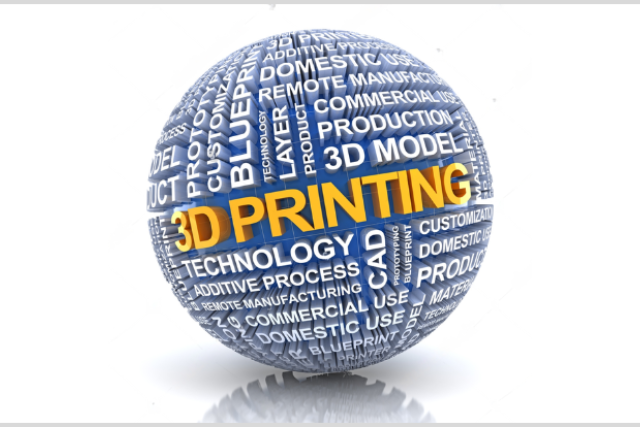Dubai is widely known for its futuristic skyline, cutting-edge architecture, and passion for innovation. In recent years, this forward-thinking mindset has extended into the city’s contemporary art scene. Galleries across Dubai are increasingly showcasing sculptures created through 3D printing.
These artworks are not only visually striking but also push the boundaries of creativity and technology. As a result, 3D printing Dubai sculpture is becoming a preferred medium for expressing futuristic themes. It allows artists to blend imagination, science, and form in ways that were once impossible using traditional methods.
Breaking the Limits of Traditional Sculpture
Futuristic art often seeks to challenge norms and move beyond conventional boundaries. Traditional sculpting materials like stone, metal, or wood can restrict certain design possibilities. In contrast, 3D printing Dubai offers unmatched freedom.
Artists can create sculptures with complex curves, intricate networks, or abstract shapes that would be impossible to carve or mold by hand. This ability to build without limits perfectly supports futuristic concepts, such as alternate realities, imagined futures, or sci-fi environments. In Dubai’s galleries, such freedom allows each sculpture to stand out as a symbol of what lies ahead.
Merging Digital and Physical Worlds
3D printing begins with a digital file. Artists use design software to model their sculpture in three dimensions. This process alone aligns with futuristic thinking, as it relies on digital tools and virtual environments.
The final output—a physical object created from data—represents the convergence of digital and physical realities. Many gallery installations in Dubai now explore this blend. For example, a sculpture might mimic the look of a digital glitch or replicate the geometry of a data map. These pieces invite viewers to think about how technology shapes the world we live in and the worlds we might live in next.
Inspiring Viewers with New Forms and Materials
Futuristic themes often involve innovation in shape, structure, and texture. 3D printing makes it possible to use advanced materials, including bioplastics, metallic filaments, carbon-fiber blends, and translucent resins. These materials reflect the idea of progress and experimentation.
In a Dubai gallery setting, sculptures made from these futuristic elements can glow, reflect light in unique ways, or appear weightless. The use of layered printing also gives artworks a sense of construction and evolution—concepts central to the idea of the future. These visual effects engage audiences and invite them to imagine what tomorrow might look like.
Visualizing Abstract Scientific Concepts
Dubai galleries often showcase art that interacts with science, space, and technology. 3D printed sculpture is ideal for visualizing abstract scientific ideas. Artists can create forms based on DNA strands, particle collisions, or theoretical physics models. They can mimic natural growth patterns using algorithm-generated shapes. This approach allows art to serve as a bridge between creative thinking and scientific curiosity. In futuristic-themed exhibitions, these works help communicate complex ideas through tangible objects. They encourage discussions about the role of science in shaping the future and the importance of creative interpretation in understanding change.
Interactive Possibilities for the Digital Age
As technology advances, viewers expect more than just static art. Interactive sculptures are becoming a key feature in Dubai’s galleries, especially for shows focused on futuristic themes. 3D printed pieces can include motion sensors, LED lighting, sound responses, or even augmented reality triggers.
When visitors move near the sculpture, it may change color or shape using hidden mechanics. This kind of engagement mirrors how we interact with digital devices in everyday life. It also suggests how future technology may become more responsive and personalized. By using 3D printing to enable these features, artists are helping redefine the gallery experience.
Cultural Fusion in Future Narratives
Dubai is a city that blends tradition with modernity. Artists working with 3D printing often use this contrast to build futuristic sculptures that include cultural references. For example, a printed sculpture may reflect patterns from Islamic architecture but reinterpret them in metallic or glowing materials.
Others might use symbols from Emirati heritage and merge them with cyber-inspired forms. This balance between old and new adds depth to the futuristic theme. It shows that the future in Dubai is not just about technology but also about identity, continuity, and evolution.
Speed and Flexibility for Conceptual Exploration
3D printing is also changing how fast artists can produce their work. Unlike traditional sculpting, which can take months, a 3D printed piece can be created and modified in a short time. This allows artists to experiment more freely with ideas related to the future. They can create a series of sculptures that show stages of evolution or quickly respond to emerging themes in science and culture. In Dubai’s fast-paced art world, where new exhibitions and events are constantly emerging, this speed supports creativity and flexibility.
Challenging the Notion of the Artist’s Hand
Futuristic art often questions the role of the human versus the machine. 3D printed sculpture fits this debate perfectly. While the artist still controls the concept and design, the printing process removes the human hand from the physical creation.
This challenges traditional views of craftsmanship. Some viewers may ask whether a machine-made sculpture is truly art. In Dubai galleries, this conversation is welcomed. It reflects wider concerns about automation, artificial intelligence, and how these forces will shape society and culture in the years ahead.
Conclusion
3D printing Dubai sculpture is an essential part of the city’s growing interest in futuristic art. It offers artists the freedom to explore bold shapes, experimental materials, and new ways of interaction. It supports digital storytelling, visual science, and cultural fusion.
Most importantly, it aligns with Dubai’s vision of the future—one that embraces technology while respecting creativity and identity. As more galleries and collectors in Dubai turn to this medium, 3D printed sculptures will continue to lead the conversation about what lies ahead in the world of art and design.







